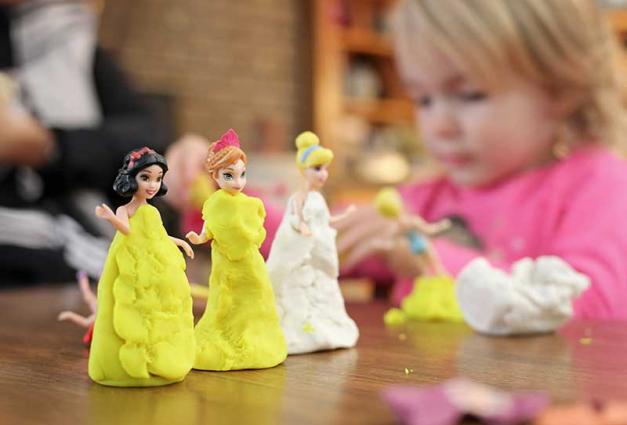Suppose you were conscious of what seemed like another self—another personality—present in your body. Who or what is that "other self"? How would you describe what was going on?
You might view the other self as an "alter personality" and explain that you had been diagnosed with Dissociative Identity Disorder. You might view it as the spirit of a deceased person and tell us that you are a psychic or a medium channeling this spirit. You might view it as a possessing spirit which you invited into your body using a ritual or which entered against your will and must be exorcized. Perhaps, more prosaically, you might tell us that you are a highly creative person, maybe a novelist, and that the other self is a fictional character that seems to have taken on a mind of its own.
The Early History of Psychology Was Comparative
At the turn of the 20th century, some clinicians used hypnosis to induce "secondary personalities" in patients (mostly women) diagnosed with "hysteria" in order to surface hidden inner conflicts; at the same time psychical researchers, including psychologists such as William James, studied spiritualist mediums who claimed to be in contact with spirits of the dead. The Swiss psychologist Theodore Flournoy published From India to the Planet Mars (Eng. trans, 1900), a book-length case study of the medium Helene Smith, and the American neurologist Morton Prince published The Dissociation of a Personality: A Biographical Study in Abnormal Psychology (1905), a book-length study of the personalities of his patient, Christine Beachamp. Flournoy and Prince were aware of each other's work. Flournoy offered a psychological interpretation of Helene Smith's channeled entities, and Prince worried that, if he allowed psychical researchers to interact with his patient, she would come to view one of her secondary personalities as a spirit and herself as a medium. These clinicians and psychical researchers were all interested in dissociative phenomena; they approached their research comparatively, recognizing that the experiences of some patients diagnosed with hysteria and some spiritual mediums shared a similar subjective experience: the presence of another self in their bodies.
But the Comparative Approach Was Abandoned
Yet, despite the early promise of this comparative approach, it was largely abandoned as psychological research on "psychical" or "paranormal" phenomena was sidelined and replaced by subspecialties devoted to the psychological study of "religious experience" and the clinical study of "psychopathology." Today, research on experiences is still largely conducted within professional niches each based on its own theoretical concepts such as dissociation, hallucinations, and delusions within clinical psychology and psychiatry, and channeling, mediumship, seeing visions, and receiving prophecies within the psychology of religion and religious studies. In taking this discipline-specific approach, researchers obscure the common features of the experiences studied and limit their ability to investigate the extent to which culture shapes such experiences.
Culture Shapes What People Experience
Scholars have shown that culture shapes experiences—including what stands out for people as nonordinary. What a person learns from growing up in a given culture shapes their expectations about what can occur and their interpretation of what is going on as experiences unfold. Culture has the potential to make some experiences stand out and others recede into the background. For example:
- When people mark experiences and the situations in which they are thought to occur as worthy of special attention, they can make experiences that seem ordinary to others stand out for them. Everyone has thoughts or feelings that suddenly pop into mind, but Latter-day Saints (LDS) mark such thoughts and feelings as potential signs of personal revelation, which heightens their importance and encourages them to reflect on their meaning. Everyone also experiences coincidences that seem meaningful, but most people chalk up such experiences to chance and quickly forget them; however, adherents of some traditions, such as New Age spiritualists, attach special significance to—and cultivate—such experiences.
- When people seek certain experiences and actively cultivate them, otherwise rare experiences might become more common. Long-term meditators report experiences, such as feelings of compassion for all living beings, that produce short-and long-term neural changes. Psychoactive drugs commonly produce nonordinary experiences, such as a sense of leaving one's body, perceiving and communicating with extraordinary beings, and ego dissolution.
- When cultures disparage or pathologize experiences, people may be less likely to attend to them or remember them when they occur or be reluctant to report them. In secular societies, particularly those influenced by Protestant Christianity, people often disparage claims to have sensed "presences" or communicated with spirits, ghosts, or other extraordinary beings. Yet, people in societies around the world claim to have had such experiences and "grief hallucinations"—experiences of the presence of dead loved ones—remain common even in highly secular societies, though people may be reluctant to talk about them.
- The extent to which experiences are viewed as distressing may depend on the way they are appraised. When hallucinations are framed positively as visions of divine figures or voices of deceased loved ones, or when dissociative experiences are interpreted as mediumship or channeling, people often seek such experiences and venerate those who have them. But when such experiences are framed in pathological terms, people are more likely to fear that they are going crazy and to find such experiences more distressing.
Although much about the precise ways in which culture interacts with experiences remains unknown, the general implications of such findings are clear. Nonordinary experiences are neither inherently pathological nor revelatory. They must be understood in their cultural context and in light of the "fruits" they bear for individuals and those around them. Nowadays, with the rising popularity—and legalization—of psychedelics, many people are actively seeking nonordinary experiences. If you have such an experience you can reflect on what it might mean, realizing that there are many possible interpretations. You can evaluate it by asking if the outcome is generally positive or negative. Is it giving you new insights and promoting positive changes in your life and the world around you, or is it causing you distress? Before cultivating or seeking nonordinary experiences—with the use of psychedelics or otherwise—you can ask whether doing so would be in keeping with your personal and social values or distract you from them.
You can take the same approach when others share an experience they view as nonordinary with you. Rather than offer an immediate reaction, try exploring the context in which this experience occurred, the behaviors that followed it, and the goals it serves for those who have had it. Doing so might allow you to respond with greater understanding, discernment, and compassion.
For Further Reading
Cardeña, E., Lynn, S. J., & Krippner, S. (Eds.). (2014). Varieties of anomalous experience: Examining the scientific evidence (Second edition). American Psychological Association.
Kirmayer, L. J., & Ryder, A. G. (2016). Culture and psychopathology. Current Opinion in Psychology, 8, 143–148. https://doi.org/10.1016/j.copsyc.2015.10.020
Larøi, F., Luhrmann, T. M., Bell, V., Christian, W. A., Deshpande, S., Fernyhough, C., Jenkins, J., & Woods, A. (2014). Culture and hallucinations: Overview and future directions. Schizophrenia Bulletin, 40(Suppl_4), S213–S220. https://doi.org/10.1093/schbul/sbu012
Taves, A., & Barlev, M. (2023). A feature-based approach to the comparative study of "nonordinary" experiences. American Psychologist, 78(1), 50–61. https://doi.org/10.1037/amp0000990
Ann Taves is a Distinguished Professor (Emerita) of Religious Studies at the University of California at Santa Barbara. She uses historical and social scientific methods to study the effects of culture on what people experience and how they understand it.
Michael Barlev is an Assistant Research Professor in the Psychology Department at Arizona State University. He combines theory, methods, and quantitative tools from evolutionary biology and cognitive science to study social cognition and behavior and cultural universality and diversity.




